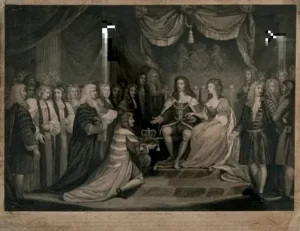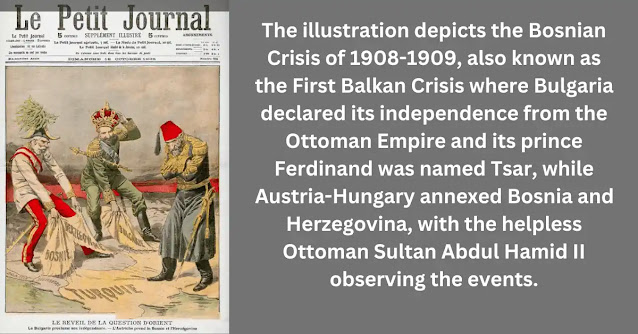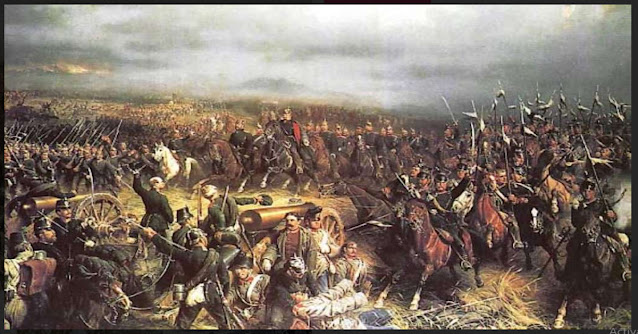England’s Religious Turmoil and the Path to Glorious Revolution
England’s Glorious Revolution (1688–1689) emerged from decades of religious and political conflict. It began with Henry VIII’s break from the Catholic Church in 1534, which established the Protestant Church of England but left the country divided. His daughter “Bloody Mary” violently restored Catholicism, while Elizabeth I later reinstated Protestantism, making it central to English identity. By the 1680s, tensions peaked when Catholic King James II clashed with a Protestant Parliament over religious freedom and royal power, leading to his overthrow in the bloodless Glorious Revolution.
While the Glorious Revolution secured parliamentary supremacy and advanced constitutional monarchy, its bloodless reputation obscures the reality: it was a foreign invasion of England by the Dutch Republic, culminating in the overthrow of James II.

💻 Table of Contents:
- The Rise of James II and the Seeds of Glorious Revolution
- A Dutch Invasion That Changed England: The Glorious Revolution
- Reaction and Resistance after the Glorious Revolution
- Glorious Revolution: A Democratic Revolt Against Monarchy
- From London to Boston: The Glorious Revolution’s Imperial Echoes
- Glorious Revolution: Power, Philosophy, and Birth of Modern Democracy
In the early 1600s, Puritan reformers—determined to purge Catholic traditions from the Church of England—collided with King Charles I’s insistence on Anglican conformity, triggering the English Civil War (1642–1648). Led by Oliver Cromwell, the Puritans triumphed, executing Charles in 1648 and exiling his heir, the future Charles II. Cromwell replaced the monarchy with a Puritan republic (the Commonwealth), ruling as Lord Protector with near-dictatorial authority until his death in 1658. After his death in 1658, the monarchy was restored in 1660 with Charles II, ending England’s brief experiment as a republic.
The Rise of James II and the Seeds of Glorious Revolution:
After Charles II’s death in 1685, his Catholic brother James II became king, initially welcomed by Protestants wishing to avoid another civil war. However, James soon angered his supporters by breaking important rules: he maintained a standing army, appointed Catholics to high offices, and suspended anti-Catholic legislation without Parliament’s consent. His alliance with Protestant dissenters failed to quell outrage, especially after he manipulated elections, suppressed free speech, and persecuted Anglican clergy. Tensions peaked in 1688 when his wife bore a Catholic heir, sparking fears of a permanent Catholic dynasty.
The birth of James’s son united Whigs (who opposed his centralized Catholic rule), Tories (traditionally loyal to the monarchy), and Anglicans (members of the official Protestant Church of England) against him. His trial of the seven bishops and rumors of a Dutch invasion further shattered his support. By mid-1688, England’s elites—fearing absolutism and Catholic dominance—plotted his overthrow. The Whigs, leading the effort, succeeded in late 1688, an event celebrated as the Glorious Revolution. James fled to France under the protection of Louis XIV, while William of Orange and his wife Mary II—James’s Protestant daughter—were crowned joint monarchs in 1689, securing England’s Protestant future.
A Dutch Invasion That Changed England: The Glorious Revolution
William of Orange, born in 1650 into Dutch nobility with English royal ties through his mother Mary (daughter of Charles I), emerged as a pivotal Protestant leader during Europe’s religious conflicts. After overcoming political resistance in the Dutch Republic and surviving the “Disaster Year” of 1672, he consolidated power as stadtholder.
His strategic 1677 marriage to James II’s Protestant daughter, Mary, positioned him to challenge Catholic rule in England. When James II’s policies and the birth of a Catholic heir alarmed English elites, the “Immortal Seven” invited William to invade in 1688, triggering the largely bloodless Glorious Revolution (though conflicts erupted in Ireland and Scotland).
William’s Dutch forces landed at Brixham in November 1688, toppling James II with minimal resistance. On January 2, 1689, the Whig-dominated Convention Parliament declared the throne vacant and offered it to William III and Mary II as joint monarchs—with William retaining executive authority.

The revolution transformed England’s political landscape: William accepted parliamentary supremacy via the 1689 Bill of Rights, enshrining Anglican Protestant succession and constitutional monarchy. After Mary’s death in 1694, William ruled alone, realigning England against French dominance and securing his legacy as both a Dutch hero and England’s revolutionary king.
Reaction and Resistance after the Glorious Revolution:
The Glorious Revolution sparked divided loyalties across Britain. While England’s elites largely backed William III—framing James II’s overthrow as a lawful “abdication”—Scotland and Ireland erupted in Jacobite revolts. Catholic Highlanders and Irish clans saw James as their legitimate king, leading to bloody conflicts like the Battle of Killiecrankie (1689) and Siege of Derry (1689). William’s government crushed these uprisings but struggled to fully suppress Jacobite sympathies, especially in remote regions.
In England, resistance was quieter but persistent. Though the Bill of Rights (1689) legitimized William’s rule, nonjuring clergy refused to swear oaths to him, and Jacobite plots simmered for decades. The revolution’s success ultimately hinged on a pragmatic compromise: tolerating Protestant dissent while excluding Catholics from power. This uneasy settlement prevented civil war but left tensions that would flare in the 1715 and 1745 Jacobite rebellions.
Glorious Revolution: A Democratic Revolt Against Monarchy
The Bill of Rights (1689), a cornerstone of constitutional law, codified the triumph of Parliament over royal absolutism following the Glorious Revolution. Drafted on parchment in iron gall ink, this landmark document established principles like frequent parliaments, free elections, and parliamentary free speech—rights that remain foundational today. It abolished arbitrary taxation, guaranteed due process, and barred Catholic monarchs, ensuring Protestant succession. Its influence extended globally, inspiring the U.S. Bill of Rights (1789) and modern human rights frameworks, including the UN Declaration of Human Rights.
💻 You May Also Read:
- Magna Carta: The Foundational Charter of Parliamentary Democracy
- The French Revolution: Causes, Consequences and Legacy
- The History of the United German-Speaking Lands and Beyond
- American Revolutionary War: Prelude to Modern Democratic Republic and Power
The Bill’s passage in December 1689 marked the culmination of England’s bloodless revolt against James II’s tyranny. By enshrining parliamentary sovereignty and individual liberties, it transformed the monarchy from absolute to constitutional—a model replicated worldwide. The document’s enduring legacy lies in its balance of authority: it empowered Parliament while protecting citizens, proving that governance could evolve without violent upheaval. The Glorious Revolution, thus, was not merely a change of rulers but a blueprint for modern democracy.
From London to Boston: The Glorious Revolution’s Imperial Echoes
The Glorious Revolution (1688–1689) marked a defining moment in English history, ending the Catholic absolutism of James II and replacing him with the Protestant rule of William III and Mary II. Invited by Protestant leaders fearful of a Catholic dynasty, William of Orange’s largely bloodless invasion led to James’s exile and ushered in an era of constitutional monarchy.
The 1689 Bill of Rights became the cornerstone of this transformation, establishing Parliament’s supremacy, restricting royal authority, and securing individual rights such as trial by jury. These reforms laid the groundwork for modern democratic governance and affirmed England’s commitment to Protestantism and representative rule.

The revolution’s effects rippled through the English Empire, particularly across the American colonies. James II’s centralized Dominion of New England unraveled as colonists, emboldened by events in England, overthrew unpopular officials like Sir Edmund Andros. Though some rebellions, like Jacob Leisler’s in New York, were crushed, the broader message resonated: resistance to authoritarian control was justified.
Glorious Revolution: Power, Philosophy, and the Birth of Modern Democracy
The Glorious Revolution, a pivotal moment in English history, marked the rise of Parliament over royal absolutism. Motivated by both religious fears—particularly the return of Catholic monarchy under James II—and political concerns about unchecked authority, Parliament invited William of Orange to assume the throne. This bloodless transfer of power in 1688–1689 solidified constitutional monarchy in England and reinforced the idea that government should serve the people, not just the crown.
At the heart of the revolution lay a deep philosophical divide between Thomas Hobbes and John Locke. Hobbes, writing during the English Civil War, supported absolute monarchy in his work Leviathan (1651), arguing that only a strong central authority could prevent chaos. He rejected both the divine right of kings and the people’s right to rebellion. In contrast, Locke’s Two Treatises of Government (1689), published during the revolution, defended natural rights—life, liberty, and property—and insisted that governments must protect these rights or risk being overthrown.
Locke’s ideas shaped not only the Glorious Revolution but also its legacy. His concept of the social contract justified the limited religious freedom of the Toleration Act (though Catholics remained excluded) and deeply influenced later democratic movements like the American Revolution. Meanwhile, Hobbes’ caution about disorder lived on among Jacobites who resisted the new regime. Ultimately, the Glorious Revolution became a turning point where Parliament’s authority, grounded in Locke’s liberalism, triumphed over the absolutism Hobbes warned might be necessary—laying the foundation for modern democracy.
Conclusion: The Lasting Legacy of the Glorious Revolution
The Glorious Revolution (1688–1689) marked a decisive turning point in English history, replacing absolute monarchy with constitutional governance rooted in parliamentary supremacy. By overthrowing James II and enshrining the principles of the Bill of Rights, it established enduring democratic ideals—frequent elections, free speech in Parliament, and protections against arbitrary rule. While framed as a bloodless transition, its complexities—from Dutch military intervention to ongoing Jacobite resistance—reveal a revolution both pragmatic and transformative, balancing stability with radical change.
The revolution’s legacy extended far beyond England. Locke’s philosophical defense of natural rights and justified rebellion inspired global movements, from America’s founding to modern human rights frameworks. Yet its contradictions—religious tolerance for Protestants but not Catholics, and colonial rebellions against authoritarianism—remind us that revolutions are rarely perfect. Ultimately, the Glorious Revolution proved that sovereignty could be shared, laying the foundation for the modern democratic state while leaving unresolved tensions that would shape future struggles for liberty.
Frequently Asked Questions and Answers
The Glorious Revolution (1688–89) was a peaceful overthrow of King James II, replacing him with William III and Mary II, and establishing constitutional monarchy in England.
The main cause was King James II’s promotion of Catholicism in Protestant England and the birth of a Catholic heir, raising fears of a Catholic dynasty.
William of Orange, a Dutch Protestant prince, led the revolution.
He invaded to stop a Catholic succession, claim the throne through his wife Mary, and strengthen England’s alliance with the Dutch against France.
William was known for defending Protestantism, leading the Glorious Revolution, and advancing constitutional monarchy and economic reforms.
It established parliamentary sovereignty, secured civil liberties through the Bill of Rights, and set the foundation for modern constitutional governance. What was the Glorious Revolution?
What was the main cause of the Glorious Revolution?
Who led the Glorious Revolution?
Why did William of Orange invade England?
What was William of Orange known for?
What was the impact of the Glorious Revolution?









